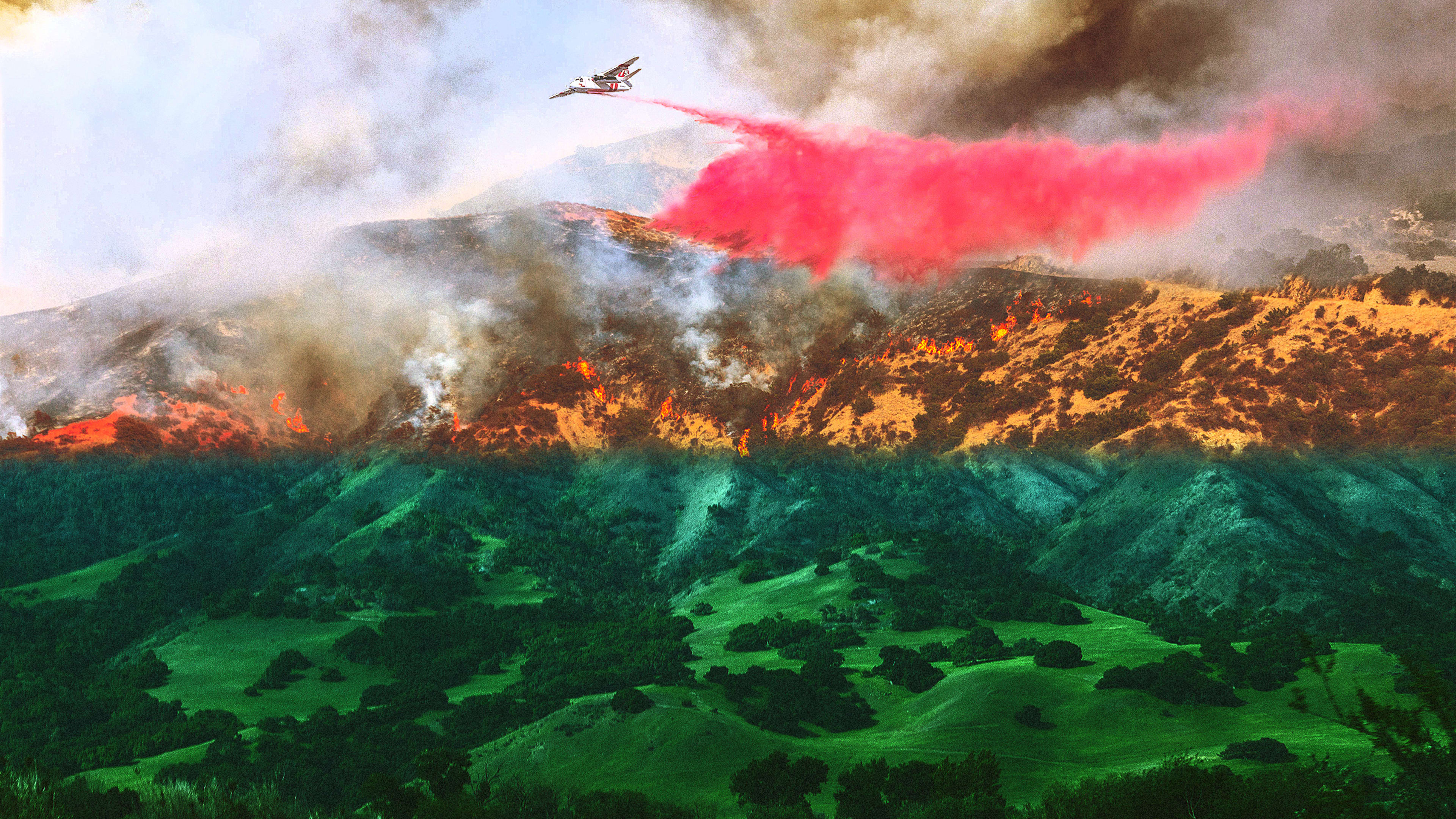California has had an exceptionally wet winter, with rain– and snowstorms filling up the state’s dry reservoirs and flooded roadways. All this precipitation has come after years of drought, which had fueled historic wildfires that burned millions of acres of land on the West Coast.
Now that California has been knocked out of the most extreme levels of drought, per the U.S. Drought Monitor, one might think that will make this year’s fire season far milder. But that may not be the case across the board. It depends on what sort of ecosystem you’re talking about.
It’s difficult to make generalizations for such a large, diverse state, says Jon Keeley, a wildfire research scientist at the Geological Survey’s Western Ecological Research Center and an ecology professor at UCLA. But typically, a wet winter means fires are less likely in forests. “One of the big limitations to fire is the condition of the fuels, and the more rain you have and the longer it goes into the spring, the more moisture is retained by the woody vegetation, and the less likely it is to burn,” he says.
Grasslands, though, can be a different story. Grasses dry out quickly, and unlike forests, the most important factor for fires isn’t how much they’ve dried out, “it’s the volume of fuel for fires,” Keeley notes. “And when you have high rainfall, you get a huge volume of grass fuels.” In regions dominated by grasslands, which tend to be lower elevation areas like in Southern California, the highest fire years tend to be the year of, or the year after, high precipitation—once the abundant grasses have dried out.
Whether those fires from more grassland fuel happen this year or next depends on if the rains continue longer into the spring. “Depending on how late the rains go, the fuels may not dry out this year,” Keeley says, but they could contribute to a “very big fire year” next year.
Still, the top determinant of whether an area will get a big fire, he adds, “is if humans ignite it.” That refers both to intentionally set blazes like campfires and also those sparked by infrastructure like power lines. “The number one thing that should be done to reduce fires in those ecosystems is to reduce human ignitions,” Keeley says.
The worst fires tend to happen during the autumn, when hot winds can blow down power lines; Pacific Gas & Electric has shut off power during wind storms to prevent fires. The utility company has also faced criminal charges for its role in wildfires: In 2020, the company pleaded guilty to 84 counts of manslaughter for the 2018 Camp Fire in Paradise, and in February 2023, a judge ruled the company would face a trial for manslaughter for its role in the Zogg Fire in September 2020.
Up in higher-elevation forests, fire suppression policies have also played a role. If lightning sparks a fire in the forest, teams work to extinguish that fire quickly. “As a result, we have an accumulation of fuels that is unlike anything we’ve seen in the past,” Keeley says. Fire is actually a natural process and has been used as a tool to manage ecosystems and even promote biodiversity.
As for this year, it’s hard to predict what will happen in the coming months. “If the rains continue for another month or so, then there’s a good chance the autumn fires will not be as bad simply because there will be enough moisture in the ground to keep fuels moist enough that they won’t carry fire readily,” Keeley says. But it’s important to keep in mind that “the fire problem is different in different parts of the state, so there’s no generalization.”
Recognize your brand’s excellence by applying to this year’s Brands That Matter Awards before the final deadline, June 7.
Sign up for Brands That Matter notifications here.
